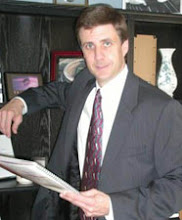As the 2008 Presidential Elections fade from our collective memory, I’d like to ask you to take a look back and think about the voting process. No, not the two years running up to November 4th, how you selected your candidate, political spending or any of the important things leading up to the selection of our next President. Rather, I’d like to ask you to think about the time from when you got to the polling place until you left. More specifically, think about the process that you went through that day.
Some of us were fortunate enough to go to polling places with short lines but many of us had a bit of a wait (a small price to pay for the right and privilege of voting). But as I stood in line that afternoon, making small talk with the people ahead and behind me in line, I couldn’t help think about the process that was going on in front of me. For the record, my wait was about an hour. During that time, the first thing that I noticed is that there were always at least six voting machines open. Clearly that didn’t seem to be the problem that was holding up the line. Next, I looked at the six stations that were designated for certain letters of the alphabet (A-D, E-H, and so on). These weren’t busy either. Finally, I looked at the first station. There was one person looking at everyone’s voter ID card and handing them a white slip of paper after making a few notations on it. This person wasn’t comparing voter ID cards to any roll or list. There were just looking at the voter ID card and handing out a white slip of paper to be taken to the next station. This was the bottleneck and (at least in my district) the cause of the long line of people waiting to vote. I wondered, what’s the purpose of this task? Is it important to the process? Could it be eliminated? Why couldn’t there be two people performing it? Couldn’t we apply some computer power? How about voter cards with a magnetic strip? In a time when almost every task in our lives has computer processing associated with it (think about how few daily tasks are completely void of computer processing) couldn’t something be done to improve this process?
In any event, the purpose here (despite what it may seem) is not to figure out how to save time at the polls four years from now (although saving a few hours for millions of Americans is probably worth some time and effort). But rather, it is to point out the value of standing back and observing the processes in your business. Too often, we are so busy facing the day-to-day challenges in our businesses that we fail to take the time to stand back and simply observe the process. Given the opportunity, one can often find improvements by asking the simple question: Why?
Force yourself to take some time away from actually working in your business and stand back and observe what happens day-to-day. If you don’t feel you can be objective, ask a trusted friend or colleague to do it for you. I have little doubt that you’ll find opportunities for improvement if you spend the time to look at the process in your business.
If your business could benefit from fractional CFO services, I would welcome the chance to speak with you. Please give me a call at (314) 863-6637 or send an email to
your cash is flowing. know where.
Copyright @ 2008 Homza Consulting, Inc.
Subscribe to:
Post Comments (Atom)

No comments:
Post a Comment
Note: Only a member of this blog may post a comment.